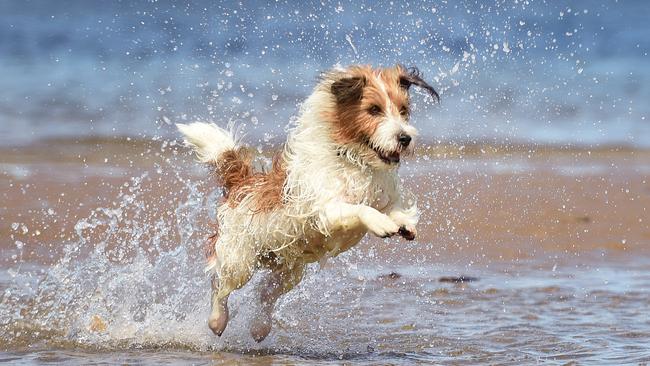Future Victoria: Millennials lead push to turn Melbourne’s middle-ring suburbs into thriving areas
Some of Melbourne’s middle-ring suburbs are thriving much more than others — and millennials are leading the charge to put them firmly on the map. So which areas are booming?
Future Victoria
Don't miss out on the headlines from Future Victoria. Followed categories will be added to My News.
Millennials are the driving force behind a resurgence of Melbourne’s middle-ring suburbs — and some suburbs are proving more in demand than others.
A PwC survey of 4612 people across Victoria found access to leisure options such as entertainment, cultural attractions, shops and sporting venues was the second-most important factor, behind only community safety, in whether people loved where they lived.
But almost half of survey respondents were unsatisfied with the leisure services and facilities in their area.
Experts say that is why middle-ring suburbs are increasingly proving to be sweet spots, with top-notch new food and entertainment venues complementing existing transport hubs, shopping strips and centres, and ample green space.
And millennials in particular — born between 1981 and 1996 — are seeing the wealth of opportunity in these suburbs, shelving inner-city renting life for a slice of suburbia with more bedrooms and a backyard.
House prices in middle suburbs outperformed the rest of Melbourne in the September quarter, with medians surging 8.3 per cent in areas 10-20km from the CBD, Real Estate Institute of Victoria data shows.
“(Millennials) are having kids and they all grew up in houses with their own bedroom and they want to provide this to their kids as well,” The Demographics Group director Simon Kuestenmacher says.
Mr Kuestenmacher said people wanted access to sport and leisure facilities, good cafes, restaurants and shops, but most were still prepared to drive to where they wanted to go.
“We want these kinds of things around. But if you consider we still live in a car-based society, most households still have a car and people are still very willing to do their weekly shopping in a car, so you don’t need to be in walking distance to a nice supermarket precinct,” he said.
“People are willing to drive to their Sunday brunch.”
PwC’s CityPulse map — which rates suburbs out of 10 on “live”, “work” and “play” factors — also gives a picture of which middle-ring suburbs are flourishing. Across the city, the average for “live” is 5.2, for “work” is 4.1, and for “play” is 4.4.
These are the middle-ring suburbs to watch:

EAST: MULGRAVE
Mulgrave’s median price rose 19 per cent to $881,000 on the back of strong demand from younger buyers.
REIV president Leah Calnan said the “bridesmaid suburb” to Glen Waverley and Mount Waverley gave buyers a more affordable entry to the housing market a suburb away from their dream postcode, while still being close to the Monash Freeway, Monash University and a revamped The Glen shopping centre and country club.
“Mulgrave is probably a push-on effect from suburbs like Glen Waverley or Mount Waverley, where the median house price is in excess of $1 million, and therefore buyers look for the next suburb,” she said.
Mulgrave has above-average live, work and play ratings on PwC’s CityPulse map, at 5.9, 5.6 and 4.4 respectively.

SOUTH: BEAUMARIS AND CHELTENHAM
Cheltenham’s golfing greens, sports clubs, easy access to the Westfield Southland, the Nepean Highway, public transport, parks, and cafes are putting it in high demand.
“Lifestyle and sports facilities are always high on people’s list of additional amenities they’re looking for when they’re house hunting,” Ms Calnan says.
“Also, access to public transport and to the freeways.”
In fact it is so in demand that the median price hit $1.05 million in the three months to September — up almost 17 per cent.
The median price in fellow bayside suburb Beaumaris rose 20 per cent to $1.825 million in the September quarter, with buyers lured by a popular shopping strip, cafes, schools, public transport, golf clubs, a new sporting club and Southland.
Cheltenham has above-average live and play ratings on PwC’s CityPulse map, at 5.9 and 5 respectively, and a work rating right on the Victorian average of 5.
NORTH-EAST: DONCASTER AND DONVALE
In the northeast, Doncaster and neighbouring Donvale are luring buyers thanks to their proximity to the Eastern Freeway and EastLink, as well as Westfield Doncaster.
They are also a stone’s throw away from the natural beauty of Warrandyte and surrounds, and an easy drive to the Yarra Valley.
“It’s having that push-out effect people are looking for, maybe a little bit more land and closer to the Dandenongs, but still close to freeways and the CBD,” Ms Calnan said.
Doncaster’s house prices jumped 14 per cent to a median of almost $1.28 million in the September quarter.
Doncaster has live, work and play ratings well above average on PwC’s CityPulse map, at 7.2, 4.7 and 6.6 respectively, while Donvale’s ratings are 6.7 for live, 4.7 for work, and 5.7 for play — also above average.
MORE FUTURE VICTORIA NEWS:
RADICAL IDEA TO OVERHAUL VICTORIA’S HIGH SCHOOLS
THE BEST PLACES TO LIVE IN MELBOURNE
RADICAL ‘RING OF CITIES’ PLAN TO EASE MELBOURNE POPULATION CRUSH
NORTH: COBURG
Mr Kuestenmacher expected to see a trend towards people demanding suburbs where everything was in walking distance.
“But this is yet not the norm and most importantly, it is not as high a priority as the sheer number of bedrooms and the block size for people,” he said.
“That’s the beauty of Coburg, for example, where you do have these pleasures available.”
Mr Kuestenmacher said Coburg, 9km north of the city, would certainly continue to see growth, which will spread to neighbouring Coburg North and Pascoe Vale.
“These areas are growing massively over the next couple of years, simply because people want to be as close as possible to the CBD and still have enough bedrooms,” he says.
Coburg’s rise is reflected in its live, work and play ratings, with 7.1, 4.7 and 5.5 respectively — all above average.
WEST: POINT COOK
Point Cook is seeing its first wave of generational change, according to demographer Bernard Salt.
And as younger people move further out from inner-suburbs such as Footscray and Newport, exciting things are happening in the suburb.

The state government has earmarked 414ha to build a new community at Aviators Field, and a fresh food market has been mooted.
Point Cook South Senior College, accommodating about 1100 students from years 10-12, is due to open in 2020.
The suburb’s house prices are also a drawcard, with its median of $664,000 well under the metro Melbourne average of $830,000.
PwC’s data shows Point Cook scores particularly well on “work”, rating a six out of 10. Its live rating is also above the city average at 5.5.

